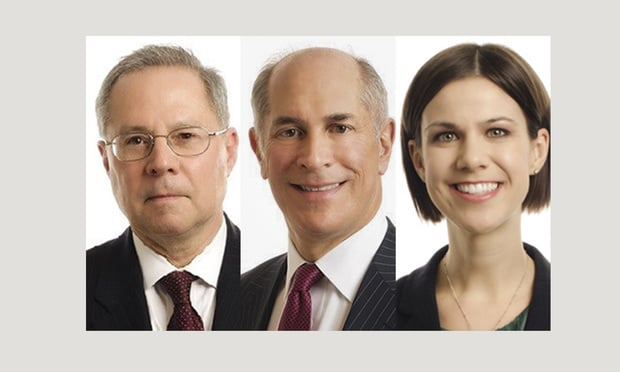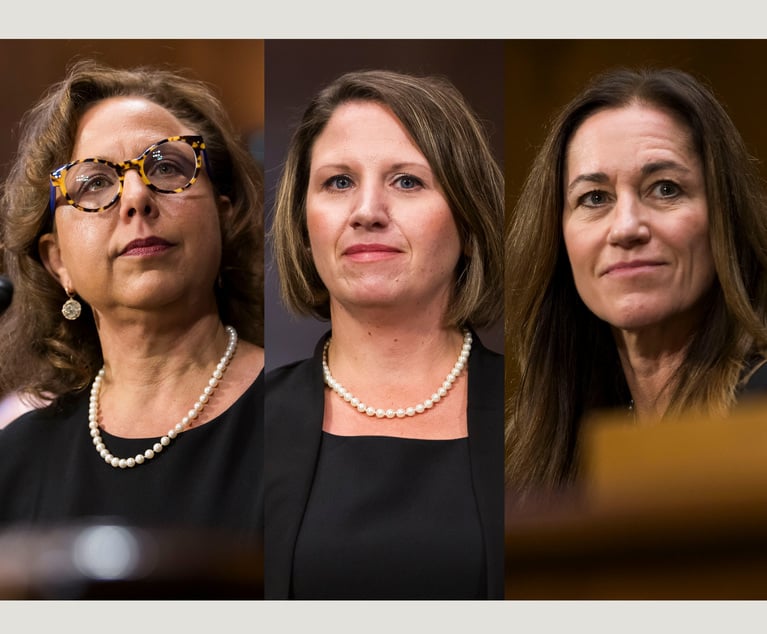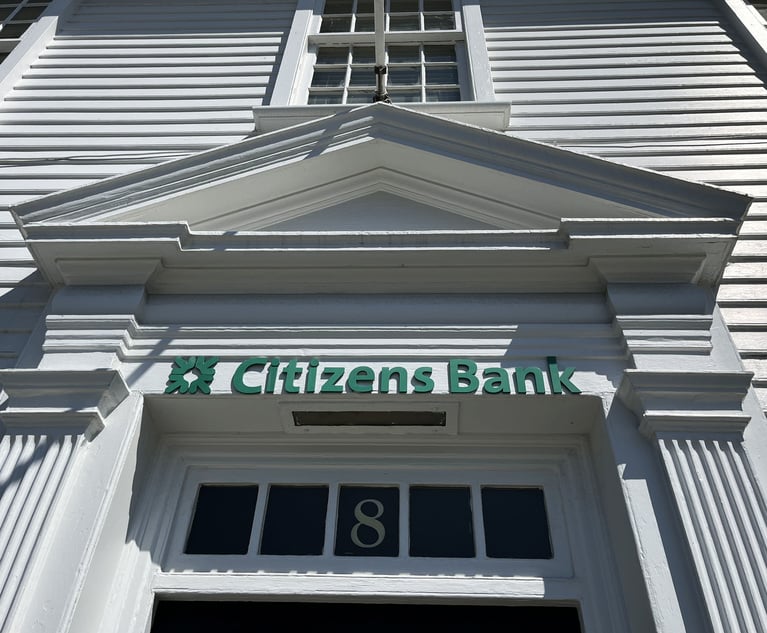 Robert L. Hickok, Jay Dubow and Whitney Redding of Pepper Hamilton
Robert L. Hickok, Jay Dubow and Whitney Redding of Pepper Hamilton 7th Circ. Provides Guidance on Deciding Motions for Class Certification in Securities Litigation
Standing alone, the Halliburton II decision offers a deceivingly simple rule for lower courts to apply when deciding whether to certify a class where the plaintiffs invoke, and the defendants attempt to rebut, the fraud-on-the-market theory.
September 01, 2020 at 11:09 AM
11 minute read
Federal courts have been struggling with deciding motions for class certification as there have been a number of recent rulings by the U.S. Supreme Court and certain of the courts of appeals that answer certain questions while creating others. In Halliburton II, the Supreme Court held that a defendant in a securities class action may rebut the Basic presumption of reliance at the class certification stage by producing direct evidence that a misrepresentation did not affect stock prices. After all, the Supreme Court reasoned, "in the absence of price impact, Basic's fraud-on-the-market theory and presumption of reliance collapse." See Halliburton v. Erica P. John Fund, 573 U.S. 258, 278 (2014). Standing alone, the Halliburton II decision offers a deceivingly simple rule for lower courts to apply when deciding whether to certify a class where the plaintiffs invoke, and the defendants attempt to rebut, the fraud-on-the-market theory.
But simple it is not, the U.S. Court of Appeals for the Seventh Circuit recently opined in In re Allstate Securities Litigation, No. 19-1830, 2020 U.S. App. LEXIS 22121 (7th Cir. July 16, 2020). The challenge lies in applying the teachings of Halliburton II without violating the teachings of Halliburton I and Amgen. Both Halliburton I and Amgen provided guidance to lower courts on the appropriate evidence that can be considered at the class certification stage. In Halliburton I, the Supreme Court held that securities fraud plaintiffs do not need to prove loss causation to obtain class certification. In Amgen, the Supreme Court clarified that proof of materiality is not a prerequisite to class certification. See Amgen v. Connecticut Retirement Plans & Trust Funds, 568 U.S. 455 (2013).
This content has been archived. It is available through our partners, LexisNexis® and Bloomberg Law.
To view this content, please continue to their sites.
Not a Lexis Subscriber?
Subscribe Now
Not a Bloomberg Law Subscriber?
Subscribe Now
NOT FOR REPRINT
© 2025 ALM Global, LLC, All Rights Reserved. Request academic re-use from www.copyright.com. All other uses, submit a request to [email protected]. For more information visit Asset & Logo Licensing.
You Might Like
View All
Pa. Federal District Courts Reach Full Complement Following Latest Confirmation

The Defense Bar Is Feeling the Strain: Busy Med Mal Trial Schedules Might Be Phila.'s 'New Normal'
7 minute read
Federal Judge Allows Elderly Woman's Consumer Protection Suit to Proceed Against Citizens Bank
5 minute read
Judge Leaves Statute of Limitations Question in Injury Crash Suit for a Jury
4 minute readLaw Firms Mentioned
Trending Stories
- 1Avantia Publicly Announces Agentic AI Platform Ava
- 2Shifting Sands: May a Court Properly Order the Sale of the Marital Residence During a Divorce’s Pendency?
- 3Joint Custody Awards in New York – The Current Rule
- 4Paul Hastings, Recruiting From Davis Polk, Continues Finance Practice Build
- 5Chancery: Common Stock Worthless in 'Jacobson v. Akademos' and Transaction Was Entirely Fair
Who Got The Work
J. Brugh Lower of Gibbons has entered an appearance for industrial equipment supplier Devco Corporation in a pending trademark infringement lawsuit. The suit, accusing the defendant of selling knock-off Graco products, was filed Dec. 18 in New Jersey District Court by Rivkin Radler on behalf of Graco Inc. and Graco Minnesota. The case, assigned to U.S. District Judge Zahid N. Quraishi, is 3:24-cv-11294, Graco Inc. et al v. Devco Corporation.
Who Got The Work
Rebecca Maller-Stein and Kent A. Yalowitz of Arnold & Porter Kaye Scholer have entered their appearances for Hanaco Venture Capital and its executives, Lior Prosor and David Frankel, in a pending securities lawsuit. The action, filed on Dec. 24 in New York Southern District Court by Zell, Aron & Co. on behalf of Goldeneye Advisors, accuses the defendants of negligently and fraudulently managing the plaintiff's $1 million investment. The case, assigned to U.S. District Judge Vernon S. Broderick, is 1:24-cv-09918, Goldeneye Advisors, LLC v. Hanaco Venture Capital, Ltd. et al.
Who Got The Work
Attorneys from A&O Shearman has stepped in as defense counsel for Toronto-Dominion Bank and other defendants in a pending securities class action. The suit, filed Dec. 11 in New York Southern District Court by Bleichmar Fonti & Auld, accuses the defendants of concealing the bank's 'pervasive' deficiencies in regards to its compliance with the Bank Secrecy Act and the quality of its anti-money laundering controls. The case, assigned to U.S. District Judge Arun Subramanian, is 1:24-cv-09445, Gonzalez v. The Toronto-Dominion Bank et al.
Who Got The Work
Crown Castle International, a Pennsylvania company providing shared communications infrastructure, has turned to Luke D. Wolf of Gordon Rees Scully Mansukhani to fend off a pending breach-of-contract lawsuit. The court action, filed Nov. 25 in Michigan Eastern District Court by Hooper Hathaway PC on behalf of The Town Residences LLC, accuses Crown Castle of failing to transfer approximately $30,000 in utility payments from T-Mobile in breach of a roof-top lease and assignment agreement. The case, assigned to U.S. District Judge Susan K. Declercq, is 2:24-cv-13131, The Town Residences LLC v. T-Mobile US, Inc. et al.
Who Got The Work
Wilfred P. Coronato and Daniel M. Schwartz of McCarter & English have stepped in as defense counsel to Electrolux Home Products Inc. in a pending product liability lawsuit. The court action, filed Nov. 26 in New York Eastern District Court by Poulos Lopiccolo PC and Nagel Rice LLP on behalf of David Stern, alleges that the defendant's refrigerators’ drawers and shelving repeatedly break and fall apart within months after purchase. The case, assigned to U.S. District Judge Joan M. Azrack, is 2:24-cv-08204, Stern v. Electrolux Home Products, Inc.
Featured Firms
Law Offices of Gary Martin Hays & Associates, P.C.
(470) 294-1674
Law Offices of Mark E. Salomone
(857) 444-6468
Smith & Hassler
(713) 739-1250





